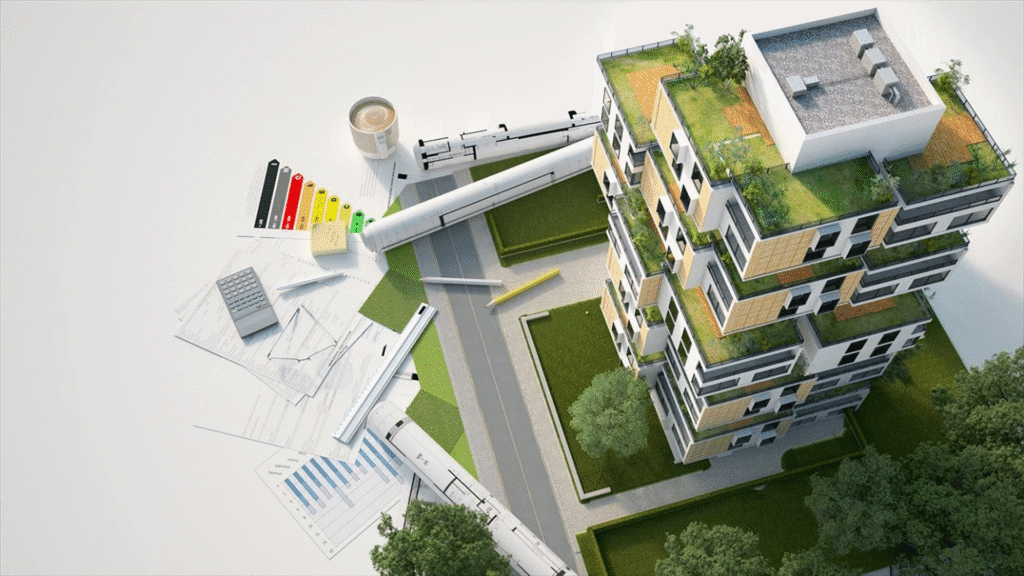UAE Green Building Standards have emerged as a global benchmark for sustainable construction, reflecting the nation’s commitment to environmental responsibility and innovation. These standards encompass a range of regulations, certifications, and initiatives aimed at promoting energy efficiency, resource conservation, and sustainable urban development. By integrating these standards, the UAE is not only enhancing the quality of life for its residents but also setting a precedent for other nations to follow in the pursuit of sustainable development.
Evolution of Green Building Standards in the UAE
Early Initiatives
The journey towards sustainable construction in the UAE began with the introduction of the Estidama (meaning “sustainability” in Arabic) initiative in Abu Dhabi in 2010. This program introduced the Pearl Rating System, which set a minimum standard for all new buildings, requiring them to achieve at least a 1 Pearl rating. Government and government-funded buildings were mandated to obtain a 2 Pearl rating, emphasizing the importance of sustainability in public sector projects.
Expansion Across Emirates
Dubai followed suit by implementing its own Green Building Regulations, which became mandatory for all new public and private buildings. These regulations encompass 79 specifications covering various aspects of building design and construction, including energy efficiency, water conservation, and indoor environmental quality. In 2016, the Al Sa’fat system was introduced, offering additional incentives for high-performing projects. Other emirates, such as Ras Al Khaimah, introduced the Barjeel Green Building Regulations in 2019, aiming to reduce energy and water use by approximately 30% compared to traditional buildings. These initiatives reflect a nationwide commitment to sustainable development and environmental stewardship.

Key Components of UAE Green Building Standards
Energy Efficiency
One of the primary objectives of the UAE Green Building Standards is to enhance energy efficiency in buildings. This includes implementing advanced insulation materials, energy-efficient HVAC systems, and smart building technologies that optimize energy consumption. By reducing energy demand, these measures contribute to lower greenhouse gas emissions and a reduced carbon footprint.
Water Conservation
Water scarcity is a significant concern in the UAE, making water conservation a critical component of green building standards. The regulations mandate the use of water-efficient fixtures, such as low-flow faucets and dual-flush toilets, as well as the implementation of greywater recycling systems. These measures help reduce water consumption and promote sustainable water management practices.

Indoor Environmental Quality
Ensuring a healthy indoor environment is essential for occupant well-being. The UAE Green Building Standards emphasize the use of low-emission materials, adequate ventilation, and natural lighting to enhance indoor air quality and comfort. These practices contribute to improved productivity and health outcomes for building occupants.
Sustainable Materials and Waste Management
The selection of sustainable building materials is encouraged to minimize environmental impact. The regulations promote the use of locally sourced, recycled, and low-impact materials. Additionally, construction waste management practices are implemented to reduce landfill contributions and promote recycling and reuse of materials.
Certification Systems and Compliance
Estidama Pearl Rating System
The Estidama Pearl Rating System is a performance-based rating system that evaluates buildings based on their sustainability performance across various categories. Buildings are awarded a rating from 1 to 5 Pearls, with higher ratings indicating superior sustainability performance. This system serves as a benchmark for sustainable building practices in Abu Dhabi.
Dubai Green Building Regulations
Dubai’s Green Building Regulations set mandatory requirements for all new developments, encompassing aspects such as energy efficiency, water conservation, and indoor environmental quality. Compliance with these regulations is assessed through a combination of elemental and performance-based methods, ensuring that buildings meet the specified standards.
Al Sa’fat Rating System
The Al Sa’fat system, introduced in Dubai, offers additional incentives for projects that exceed the minimum requirements of the Green Building Regulations. This rating system encourages innovation and excellence in sustainable building practices, rewarding developers for implementing advanced sustainability measures.
Impact and Benefits of Green Building Standards
Environmental Benefits
The implementation of green building standards has led to significant reductions in energy and water consumption, contributing to lower greenhouse gas emissions and a smaller environmental footprint. These efforts align with the UAE’s commitment to achieving net-zero emissions by 2050.
Economic Advantages
Sustainable buildings often result in lower operational costs due to reduced energy and water usage. Additionally, properties that meet green building standards tend to have higher market value and attract environmentally conscious investors and tenants.
Social and Health Improvements
Buildings designed with occupant health in mind offer improved indoor air quality, natural lighting, and thermal comfort. These factors contribute to enhanced productivity, well-being, and satisfaction among building occupants.

Challenges and Future Directions
Harmonization Across Emirates
While significant progress has been made, there is a need for greater harmonization of green building standards across all emirates. Standardizing regulations would streamline compliance processes and ensure consistent sustainability practices nationwide.
Integration of Emerging Technologies
The integration of emerging technologies, such as renewable energy systems, smart building technologies, and advanced materials, presents opportunities to further enhance the sustainability of buildings. Encouraging innovation and the adoption of these technologies will be crucial in achieving the UAE’s sustainability goals.
Public Awareness and Education
Raising public awareness and providing education on the benefits of sustainable construction are essential for fostering a culture of sustainability. Engaging stakeholders, including developers, architects, and the general public, will promote the adoption of green building practices.
Conclusion
The UAE Green Building Standards serve as a model for sustainable construction practices, demonstrating the nation’s commitment to environmental stewardship and innovation. By implementing comprehensive regulations and certification systems, the UAE is setting a global benchmark for sustainable development. Continued efforts to harmonize standards, integrate emerging technologies, and raise public awareness will further strengthen the nation’s position as a leader in sustainable construction.
Do follow UAE Stories on Instagram
Read Next – Unlock Your Dream Career: Top Work From Home Jobs In Dubai














